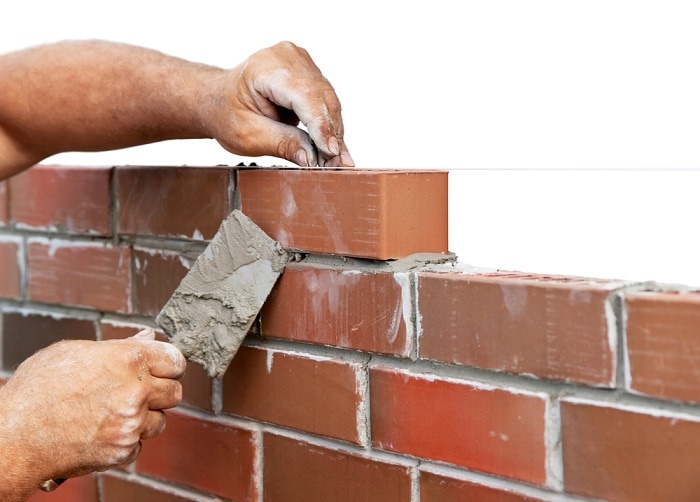
I.Introduction
A. Importance of understanding wall materials
Understanding the materials used in constructing walls is paramount for architects, builders, and homeowners alike. Wall materials not only impact the structural integrity of a building but also influence its aesthetic appeal, energy efficiency, and long-term maintenance requirements.
B. Historical overview of wall construction
Throughout history, humans have employed various materials and techniques to construct walls, reflecting cultural, geographical, and technological advancements. From ancient civilizations using mud and stone to modern innovations in concrete and steel, the evolution of wall construction is a testament to human ingenuity and engineering prowess.
C. Factors influencing the choice of wall materials
Several factors influence the selection of wall materials, including climate, budget, architectural style, sustainability goals, and local building codes. By considering these factors, stakeholders can choose materials that align with their specific needs, values, and design objectives.
II. Common Wall Materials
A. Brick
1. Composition and characteristics
Brick walls are constructed using fired clay bricks, known for their durability, thermal mass, and timeless aesthetic appeal. Each brick is composed of clay, shale, or a combination thereof, molded into rectangular shapes and kiln-fired to enhance strength and durability.
2. Advantages of brick walls
Brick walls offer excellent insulation properties, helping regulate indoor temperatures and reduce energy consumption. Additionally, brick is resistant to fire, pests, and moisture, making it a durable and low-maintenance option for exterior and interior walls.
3. Considerations when using brick
Despite its benefits, brick construction requires skilled labor and can be relatively expensive compared to other wall materials. Additionally, proper installation and maintenance are essential to prevent issues such as efflorescence, cracking, and water infiltration over time.
B. Wood
1. Types of wood used in wall construction
Wood walls are constructed using various types of timber, including softwoods like pine and cedar, as well as hardwoods such as oak and maple. Each type of wood offers unique characteristics in terms of grain pattern, color, and durability.
2. Benefits of wood walls
Wood walls impart warmth, natural beauty, and a sense of craftsmanship to interior spaces, making them a popular choice for residential design. Wood is also renewable, biodegradable, and energy-efficient, contributing to sustainable construction practices.
3. Maintenance and sustainability of wood
Proper maintenance is essential to preserve the beauty and integrity of wood walls, including periodic cleaning, sealing, and refinishing as needed. Additionally, sourcing wood from responsibly managed forests or reclaimed sources promotes environmental sustainability and reduces carbon footprint.
C. Concrete
1. Composition and properties of concrete
Concrete walls are made from a mixture of cement, aggregates, water, and additives, resulting in a durable, versatile, and cost-effective building material. Concrete can be cast in place or prefabricated into various shapes and sizes to suit different construction requirements.
2. Applications of concrete in walls
Concrete walls are commonly used in both residential and commercial construction for their strength, fire resistance, and sound insulation properties. From foundation walls to exterior facades and interior partitions, concrete offers structural stability and design flexibility in diverse applications.
3. Pros and cons of concrete walls
While concrete walls provide excellent durability and longevity, they can be susceptible to cracking, staining, and moisture infiltration if not properly designed and maintained. Additionally, concrete production has environmental implications, including energy consumption and carbon emissions, prompting the need for sustainable alternatives and practices.
III. Specialized Wall Materials
A. Rammed Earth
1. Process of rammed earth construction
Rammed earth walls are built by compacting layers of soil, gravel, and stabilizers within formwork, creating solid and durable structures. This ancient building technique harnesses local materials and labor to create sustainable, energy-efficient, and aesthetically pleasing walls.
2. Environmental and thermal benefits
Rammed earth walls offer natural insulation, thermal mass, and breathability, regulating indoor temperatures and reducing reliance on mechanical heating and cooling systems. Additionally, rammed earth construction minimizes environmental impact by utilizing locally sourced materials and promoting energy efficiency.
3. Challenges and limitations
Despite its sustainability and aesthetic appeal, rammed earth construction requires skilled labor, specialized equipment, and meticulous attention to detail. Challenges such as soil composition, weather conditions, and structural engineering considerations may impact the feasibility and cost-effectiveness of rammed earth walls in certain contexts.
B. Straw Bale
1. Characteristics and construction process
Straw bale walls are constructed by stacking bales of straw between a structural framework, securing them with wire or plaster to create solid and insulating wall assemblies. This eco-friendly building method harnesses agricultural waste to create energy-efficient and affordable housing solutions.
2. Insulation and sustainability features
Straw bale walls provide excellent thermal insulation, reducing heating and cooling costs while promoting indoor comfort and energy efficiency. Additionally, straw is a renewable and biodegradable material, making it a sustainable choice for wall construction in eco-conscious projects.
3. Considerations for straw bale walls
Despite its benefits, straw bale construction requires careful planning, moisture management, and compliance with building codes and regulations. Proper detailing, foundation design, and maintenance are essential to ensure the structural integrity and longevity of straw bale walls over time.
C. Insulated Concrete Forms (ICF)
1. Structure and insulation properties
Insulated Concrete Forms (ICF) are hollow blocks or panels made from expanded polystyrene (EPS) or other insulating materials, stacked together and filled with concrete to create robust and energy-efficient wall systems. ICFs combine the benefits of concrete construction with superior thermal performance, providing enhanced comfort and energy savings in buildings.
2. Energy efficiency benefits
ICF walls offer high levels of thermal insulation, reducing heat loss and energy consumption for heating and cooling purposes. The continuous insulation provided by ICFs helps maintain consistent indoor temperatures, minimize thermal bridging, and improve overall building performance.
3. Installation and cost considerations
While ICF construction offers numerous benefits, including speed of installation, durability, and energy efficiency, it can be more expensive upfront compared to conventional wall systems. However, the long-term savings in energy costs, maintenance, and occupant comfort often outweigh the initial investment, making ICFs a cost-effective solution for energy-conscious projects.
IV. Emerging Trends in Wall Materials
A. Green Building Materials
1. Sustainable options for eco-friendly construction
Green building materials prioritize environmental sustainability, resource conservation, and occupant health and well-being. From recycled and renewable materials to low-impact manufacturing processes, green building materials offer viable alternatives to traditional construction methods.
2. Benefits of using green building materials
Green building materials offer numerous benefits, including reduced environmental impact, improved indoor air quality, and enhanced energy efficiency. By choosing sustainable materials, builders can create healthier, more resilient, and environmentally responsible buildings that contribute to a more sustainable future.
3. Examples of innovative green wall materials
Innovative green wall materials include recycled glass countertops, bamboo flooring, reclaimed wood paneling, and cellulose insulation made from recycled paper. These materials not only reduce waste and carbon emissions but also add unique aesthetic and functional features to architectural designs.




